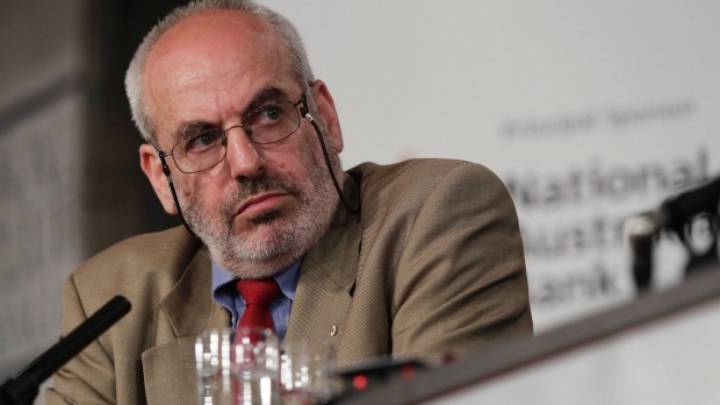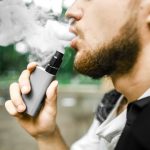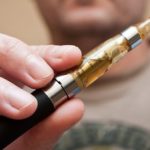NZ and US Pass Laws to Reduce Smoking Harms, While Australia Makes it Harder to Quit

The NZ government launched its Smokefree Aotearoa 2025 Action Plan on 9 December. A decade in the making, the policy proposes to see less than 5 percent of the population smoking in four years’ time, within a country that sees a little over 13 percent of the overall populace currently lighting up.
The action plan has three main aims: “eliminating inequities in smoking rates and smoking-related illnesses”, ensuring that young people never start smoking and increasing the number of those already in the habit to give up.
Expected to be passed next year, the reforms will establish a partial ban on tobacco sales, which will involve youths born after 2008 being prohibited from purchasing cigarettes from 2027 onwards, and this age limit will be increased by one year annually.
The Ardern government’s plan will facilitate older smokers in transitioning to “quality vaping and smokeless tobacco products”, whilst encouraging youths not to take up these alternatives to smoking. And this move towards less harmful nicotine consumption is also taking place in the US.
New Zealand’s smokefree policy initially seems at odds with the antidrug war dictum that banning a substance leads to stronger demand, however with Wellington’s emphasis on alternatives, such as vaping, its plan is certainly an improvement on the anti-vaping prejudice our nation harbours.
Targeted, not indiscriminate
“It’s debatable whether these restrictions are really prohibition when vaping and other low risk ways of taking nicotine are readily available in New Zealand,” said Australian Tobacco Harm Reduction Association director Dr Alex Wodak.
“Surely this is ‘nudging’ people from deadly to much safer ways of taking nicotine,” he continued, “a consummation devoutly to be wished.”
The doctor rather described the policy as “a highly targeted form of prohibition in a population where smoking rates are already extremely low”, with only 1.1 percent of NZ 15- to 17-year-olds currently smoking.
A similar targeted ban that works, Wodak cited, are local laws that require zero blood alcohol levels amongst learner and provisional drivers.
And the Smokefree Aotearoa 2025 Action Plan has a particular focus on reducing smoking rates amongst Māori, Pacific peoples and disadvantaged communities, as while only 13.4 percent of the overall population continues to smoke, the rate amongst Māori communities is 31.4 percent.
“Will these policies increase the black market in New Zealand from the current estimated 10 percent of supply?” Wodak questioned. “Most likely.”
“But policy is always a matter of trade-offs,” he went on. “If the black market for tobacco increases slightly, but smoking rates and smoking iniquities continue to tumble, surely that would overall be a very positive outcome.”

Reducing the harms
The NZ Health Ministry’s position statement on vaping explains that inhaling nicotine via vapour is much less harmful than smoking tobacco. And it further stipulates that there’s no international evidence to show that what it maintains is an avenue out for smokers, hampers antismoking efforts.
Dr Wodak points to vaping as “a way of taking nicotine which is at least 95 percent safer than smoking”. And he adds that statistics show that in New Zealand an ongoing increase in the uptake of vaping since 2016, coincides with a marked drop in rates of smoking.
“In countries where tobacco harm reduction options can compete easily with cigarettes, smoking rates have plummeted as rates of tobacco harm reduction options have soared,” the veteran tobacco harm reduction advocate told Sydney Criminal Lawyers.
This pattern in a rise in vaping coupled with a drop in smoking rates has also been witnessed in nations, like the United States and the UK, where the electronic means of ingesting nicotine via vapour is widely available.
However, Canberra has hampered a similar trend from taking hold in this country.
Tobacco harm reduction in play
Wodak also highlights some recent developments in the US as being of particular importance in terms of reducing local smoking rates. These involve the Food and Drug Administration authorising the sale of alternatives to smoking tobacco as a means to lower certain health risks.
In October 2019, the FDA approved the sale of eight snus products. This form of sucking tobacco is part of the US modified risk tobacco product (MRTP) pathway.
In making its announcement, the US FDA explained that snus “puts you at a lower risk of mouth cancer, heart disease, lung cancer, stroke, emphysema, and chronic bronchitis” in comparison to the effects of smoking cigarettes.
The following year saw the FDA permit tobacco giant Philip Morris International commence selling IQOS heated tobacco products. These electronic devices allow for tobacco to be heated, not burnt, which then produces an inhalable aerosol.
“The FDA accepted that scientific studies ‘have shown that switching completely from conventional cigarettes to the IQOS system significantly reduces your body’s exposure to harmful or potentially harmful chemicals’,” Dr Wodak made clear.
While in October, the FDA further authorised the marketing of several vaping devices accompanied by tobacco-flavoured e-liquids. The agency states the data showed that the “marketing of these products is appropriate for the protection of public health”.
Barriers to reducing harms
“In Australia, smoking kills more people every year than the combination of alcohol, prescription drugs, illicit drugs, road crashes, HIV and suicide,” Wodak stressed. And “while the policy of tobacco harm reduction is embraced, in practice tobacco harm reduction is fiercely resisted.”
After years of a nationwide refusal to permit the legal use and availability of vaping liquids containing nicotine, which saw many importing the products, the Therapeutic Goods Administration (TGA) decided to make nicotine liquid available via a doctor’s prescription.
So, from 1 October, liquid can be obtained via a pharmacy with a prescription, or otherwise people can import 3 months’ worth of the substance from overseas, again with a prescription, via the convoluted TGA personal importation scheme.
Importing liquid nicotine without a prescription now carries a $222,000 fine.
Despite the progress being made in countries, like the US and NZ, the TGA posits that “there is evidence that nicotine vaping products act as a ‘gateway’ to smoking in youth and exposure to nicotine in adolescents may have long-term consequences for brain development”.
According to Wodak, Australia is the only western democracy that requires people to obtain a prescription for nicotine vaping. This requirement simply makes access harder for those attempting to quit smoking.
The Harm Reduction Australia ambassador further outlines that the “Australian government anti-vaping policy” is incomprehensible in light of developments around the globe, as tobacco alternatives are fast replacing cigarettes just as “renewable energy is cannibalising fossil fuels”.
“The hostility to tobacco harm reduction in Australia by the health establishment, tobacco control and public health is unlike in any other western democracy,” Dr Wodak concluded. “The battle over vaping is yet another chapter in the long conflict between harm reduction and prohibition.”
“Harm reduction wins almost all of these battles although this often takes decades.”







